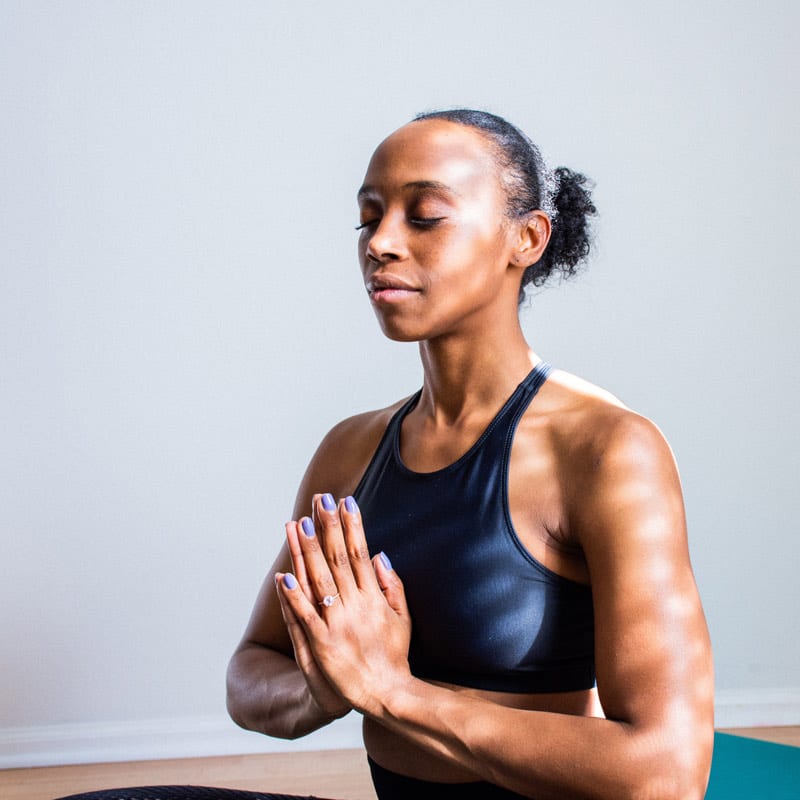I knew I had a problem in 2015, after returning to the US from a year-long teaching stint abroad. It began with flashbacks, intrusive memories of the poverty and food insecurity I experienced in my host village. And it ended with shame, an internalized belief that I was a broken woman, forever irreparable and therefore inhuman.
Following my problem’s onset, I checked myself into therapy. After two sessions, I earned a PTSD (post-traumatic stress disorder) diagnosis.
My struggles, however, did not end on the therapist’s couch.
I knew I had a bigger problem when, despite two-years of treatment, my PTSD symptoms worsened so badly that I turned to anorexia to numb my survivor’s guilt and the emotional dysregulation that came with it.
It was then that I realized.
Therapy is not enough.
Why PTSD is Unique
If you’re a trauma survivor who, despite continuous rounds of talk therapy, also struggles with PTSD, know that therapy is probably not enough for you either.
Because unlike other conditions in the anxiety family, such as generalized anxiety disorder and panic disorder, PTSD is not caused by chemical imbalances in the brain. Instead, it’s caused by dysfunction in the mind and body, a dysfunction therapy alone cannot treat.
Understanding PTSD’s Mind-Body Component
Before you can treat PTSD in the mind and body, you must understand PTSD in the mind and body.
Let’s start with the mind. Or more specifically, your brain’s emotional, memory, and sensory perception organs, the limbic system.
To simplify, your limbic system is like a bustling corporate office. Under everyday circumstances, like grocery shopping and bathing, your mental corporate office works harmoniously.
Your brain’s librarian, the hippocampus, files your memories in a mental card catalog. The thalamus, your mind’s executive assistant, passes along relevant sensory information to your brain’s CEO, the cerebral cortex. Your mind’s business consultant, the prefrontal cortex, helps regulate your emotions and decision making. And in the background runs your hypothalamus, your mental IT department that regulates your bodily functions and the physical aspects of emotional arousal.
When you encounter a stressful situation, however, your mental corporate office’s emergency response specialist, the amygdala, springs into action. Small but strong, your amygdala has the power to hijack your entire limbic system through an immediate, unconscious mechanism called the stress response.
With the hypothalamus as its teammate, your amygdala activates your sympathetic nervous system. Once activated, your sympathetic nervous system floods your body with adrenaline and cortisol.
Adrenaline ramps up your metabolism by raising your blood pressure, heart rate, and breath rate. And cortisol supercharges your muscles, granting you the superhuman strength required to fight, flee, or endure (freeze) the source of danger.
Ordinary stressors, such as rollercoasters, invoke an ordinary stress response and an ordinary come-down to match. Once the stressful situation has passed, a non-traumatized brain begins the memory consolidation process. The amygdala cedes control to the prefrontal cortex, and the hippocampus files the memory away in long-term storage.
Extraordinary stressors, such as car accidents and natural disasters, however, overload your brain, where instead of processing the memory, your traumatized limbic system miscommunicates. Upon return to safety, the amygdala goes rogue, circumventing the prefrontal cortex’s authority. The hippocampus, unable to archive the traumatic memory, recirculates it over and over. Intermixed with it all is your erroneously activated sympathetic nervous system, pumping your body full of stress hormones.
This mind-body component is why therapy is not enough for recovering from trauma—because therapy only treats the mind, and you cannot treat PTSD in the mind without also treating PTSD in the body.
The Consequences of Ignoring PTSD in the Body
Untreated PTSD in the body means subjecting yourself to long-term activation of your stress response. A long-term stress response means overexposure to adrenaline and cortisol, and overexposure to stress hormones imparts invisible wear and tear on your body. If left untreated for long enough, PTSD in your body could transmute into physical health conditions, such as autoimmune disorders and heart disease.
The Recovery Patchwork Quilt
Now that you’ve gotten this far, you’re probably wondering – how can I treat PTSD in my body?
The answer lies in adopting a recovery lifestyle or assembling what I like to call a “Recovery Patchwork Quilt.” As an amalgamation of sustained and deliberate lifestyle choices, an effective Recovery Patchwork Quilt (RPQ) helps supplement the hard work you do inside a therapist’s office through mind-body practice. An effective RPQ does three things:
- Stimulates your vagus nerve. As a member of your parasympathetic nervous system, your vagus nerve regulates organ functions and induces calm, relaxed feelings when stimulated. Like a muscle, it can be toned and strengthened. Yoga and meditation, for example, are scientifically proven ways to tone your vagus nerve and conquer your PTSD symptoms.
- Involves music and physical movement. In addition to providing a healthy creative outlet, activities such as dance, theater, and singing allow you to reconnect with your emotions and your body.
- Facilitates corrective interpersonal experiences. Social withdrawal and distrust of others are hallmark PTSD symptoms, especially if you carry interpersonal traumas as I do. Hobby communities provide a safe, pressure-free space for you to connect with like-minded peers and establish supportive relationships.
How to Start Weaving Your Own Recovery Patchwork Quilt
Like with real quilts, start by stitching one square at a time. Begin by incorporating one activity into your existing routine. Commit to practicing it once a week for 8 weeks. Why 8 weeks? Because it takes at least 2 months for a new behavior to become a habit.
My personal recommendation is to start with an 8-week yoga challenge, as yoga is guaranteed to provide immediate results. To help you stay motivated, write your goal down on a sticky note, and create reminders in your calendar. If you miss a week, don’t fret; simply resume where you left off at your earliest convenience.
After 8 weeks, add another activity (and continue practicing the original activity). Repeat until you’ve successfully adopted three hobbies. For best results, continue practicing all three activities for at least one year after the initial 8-week challenge period. It’s hard work, but trust me, it’s worth it in the end.
For example, after realizing therapy wasn’t enough, I began my RPQ with an 8-week yoga challenge. Over time, I expanded my recovery lifestyle with partner dance lessons (swing, blues, and tango), writing workshops, and socialization with trusted friends. Since starting my RPQ in 2018 (and recovering from anorexia), I’ve seen a dramatic reduction in my PTSD symptoms. So much that entire weeks pass where I forget I’m a trauma survivor.
In Conclusion
When it comes to recovering from trauma and managing PTSD, therapy is not enough.
Because unlike other psychiatric conditions in the anxiety family, PTSD possesses a unique mind-body component. Supplement the hard work you do inside a therapist’s office with a Recovery Patchwork Quilt, a system of lifestyle choices that encourage mind-body connection in the aftermath of trauma.
If you or someone you know experiences mental health issues, it is important to seek help from a qualified professional. Our Resource Specialist can help you find expert mental health resources to recover in your community. Contact us now for more information on this free service to our users.

Photo by madison lavern on Unsplash
The opinions and views expressed in any guest blog post do not necessarily reflect those of www.rtor.org or its sponsor, Laurel House, Inc. The author and www.rtor.org have no affiliations with any products or services mentioned in the article or linked to therein. Guest Authors may have affiliations to products mentioned or linked to in their author bios only.
Recommended for You
- Learning to Make Music as a Tool for Stress Management - July 25, 2024
- Discovering the Best Therapy for Depression: Effective Treatments and Solutions - July 22, 2024
- How to Overcome Separation Anxiety During a Relationship Break? - July 18, 2024





